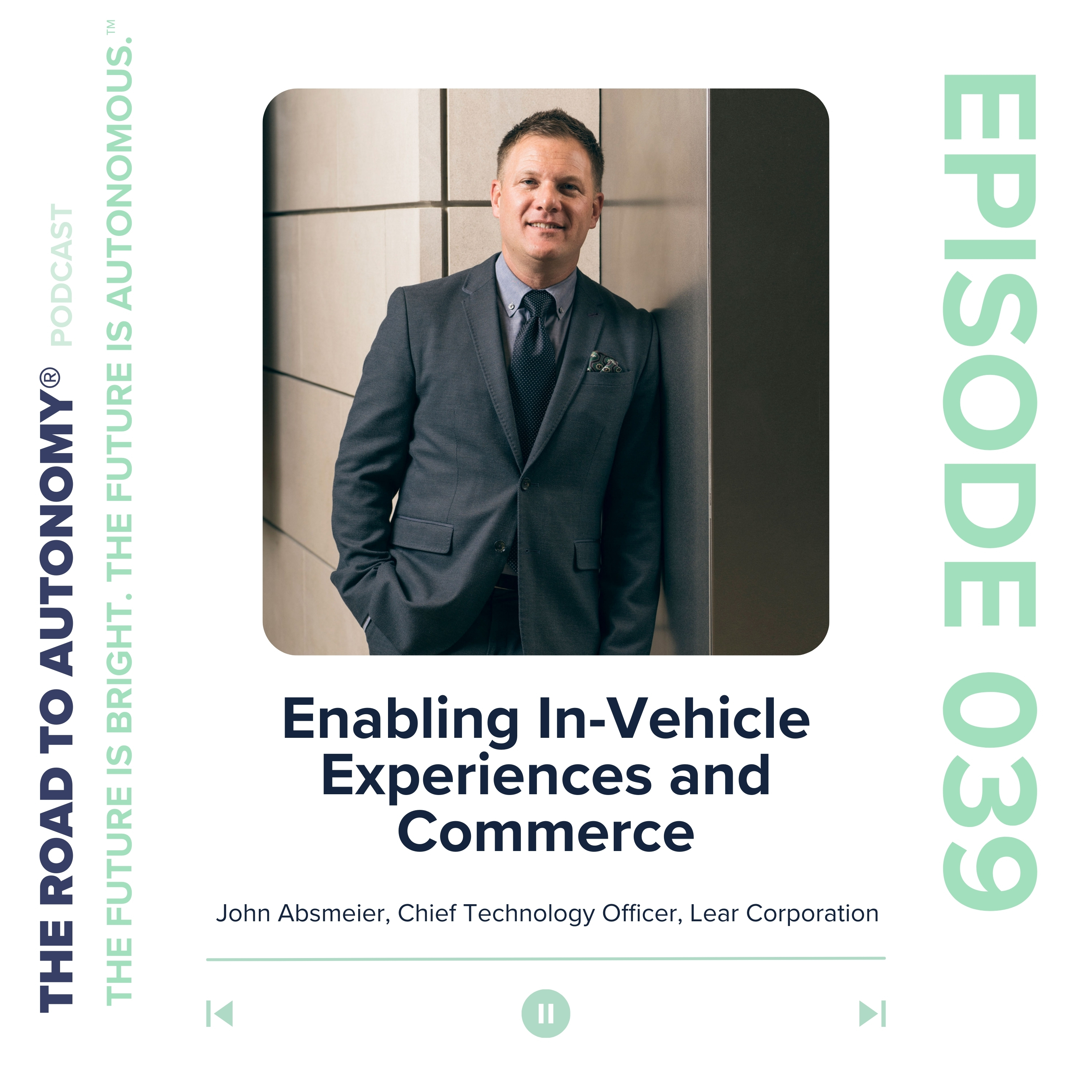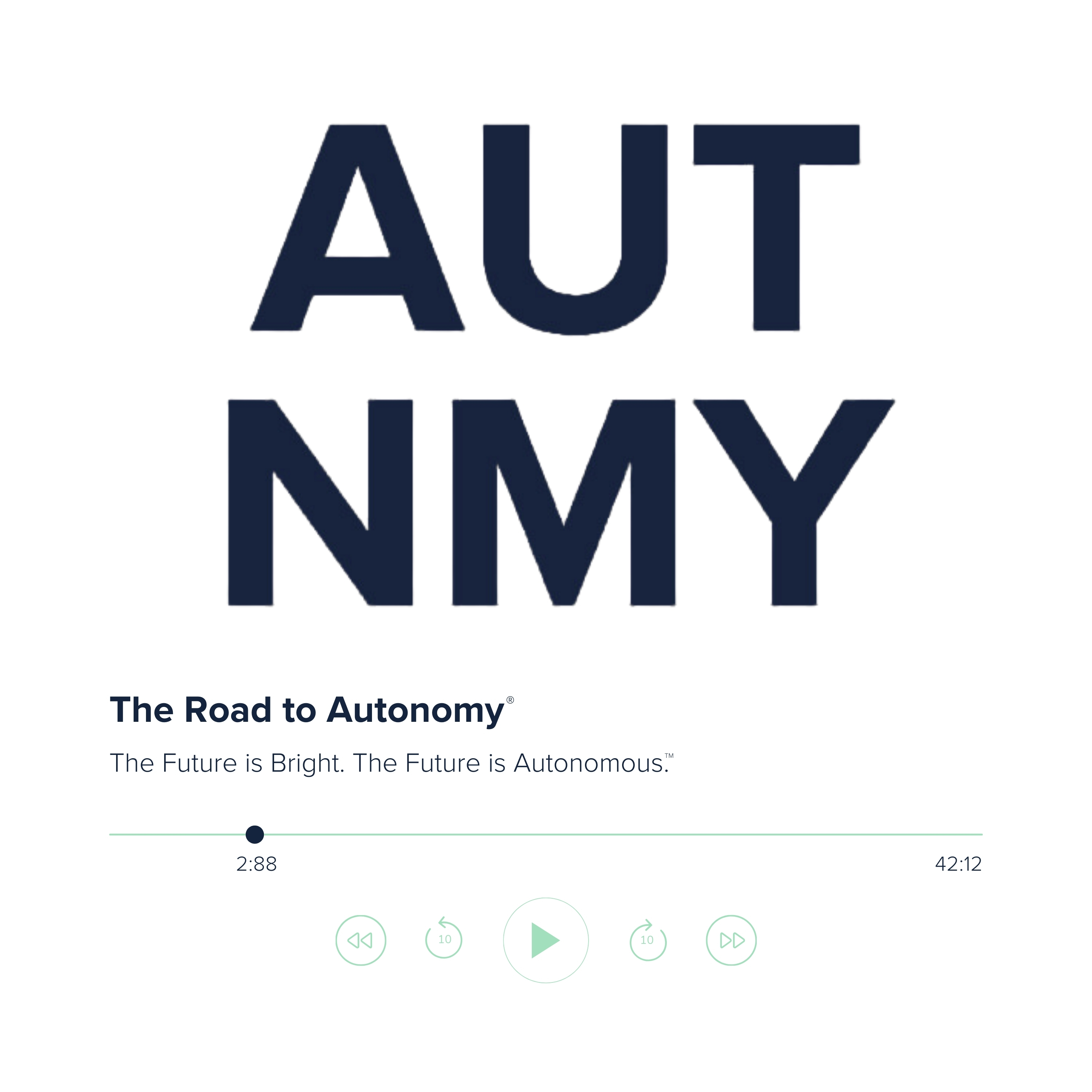
Episode 39 | Enabling In-Vehicle Experiences and Commerce

The Road to Autonomy
Shownotes Transcript
John Absmeier), Chief Technology Officer, Lear Corporation) joined Grayson Brulte) on The Road To Autonomy Podcast to discuss Seating as a Service and how Xevo will enable in-vehicle experiences and commerce.
The conversation begins with John discussing his time in the United States Marine Corps and what he learned as a Sergeant E5 motor transport mechanic. John learned leadership skills that have translated into an extremely successful career as an innovator and business leader.
As a young engineer, John worked on the inductive charge panel connection system for the GM EV1).
I got highly interested in electrification 25 years ago. – John Absmeier
It was this project that sparked John’s interest in electrification. In 2012, John set up Delphi Labs and led the lab’s development of its autonomous vehicle platform. In 2015 a Delphi Labs autonomous vehicle completed a coast-to-coast trip from San Francisco to New York City. During this time, John put his leadership skills to work as he worked with the team to solve the complex problem of autonomous driving.
With a background in solving complex problems, Grayson asks John what attracted him to join Lear. John goes onto discuss his time at Samsung and when Mr. Ray Scott, CEO of Lear Corporation approached him about becoming CTO.
We need to start to focus on innovation and technology as a priority in our mission. We need someone who has experience and wants to drive that. – Mr. Ray Scott, President & CEO, Lear Corporation as told by John Absmeier
When John joined Lear, he became the company’s first CTO. As CTO of Lear, John became CTO of a publicly-traded company with a market cap at that time of $13 billion (June 2018). As CTO of a publicly-traded company, Grayson asks John how he is keeping Lear 2 to 3 steps ahead of the competition in autonomous vehicles.
Autonomous vehicles for Lear are a bit of a different thing. We are not directly competing in the full-stack development. But, all of our products are affected by the changes that happen. – John Absmeier
As mobility changes and new shared services are introduced, there is one common denominator – passengers will continue to ride in seats. New business models will emerge such as ‘Seats as Service” where customers can opt to take a ride in a vehicle that offers an in-vehicle seat massage.
With the growth of the gaming world, Grayson asks John if Lear is taking inspiration from the gaming world as it relates to in-vehicle seat design.
The user experience is now the main differentiator in cars. – John Absmeier
Expanding the conversation of experiences, Grayson asks John about Lear’s acquisition of Xevo in 2019. Why did Lear acquire Xevo? Xevo will allow Lear to expand its “seating as a service” compliment it with in-vehicle experiences and commerce.
Looking to the future, Grayson asks John when he expects to see AR (augmented reality) experiences in vehicles. Taking a step back, John talks about CES 2014, when Samsung showcased an AR experience in a Tesla Model S. Staying on the CES theme, Grayson talks about the Warner Bros. / Intel immersive entertainment experience which they demonstrated) in 2019.
As companies look to develop in-vehicle experiences, Grayson shares his thoughts on why Disney will introduce a Star Wars in-vehicle experience at Walt Disney World in Orlando, FL. Comparing and contrasting Disney with Lear, Grayson asks John about the footprint of the Xevo platform.
Xevo is currently running in over 50 million vehicles globally. The Xevo commerce platform has over 400,000 retail outlets which are available to customers today. All of the data generated through driver interactions is owned by Xevo’s OEM customers.
To enable in-vehicle commerce a payment method is needed. Grayson asks John how Xevo approaches payments and integrates the ability to pay for goods and services into the platform. Xevo does not store credit card data, instead, they aggerate payments through a secure wallet. When the vehicle becomes autonomous, the wallet can reside in the mobility provider’s app.
Wrapping up the conversation, Grayson and John discuss the current state of M&A in the autonomous vehicle industry.
There [are] very few companies in the world that have the balance sheet to create an entire autonomy stack. I estimate that it is somewhere in the $50 billion to the $100 billion range to create a full autonomous stack solution. – John Absmeier
Consolidation is coming across the board as companies start to turn their attention to the economics of autonomy.
Mobility is only going to get a lot better. – John Absmeier
Recorded on Thursday, April 29, 2021
--------
About The Road to Autonomy
The Road to Autonomy® is a leading source of data, insight and commentary on autonomous vehicles/trucks and the emerging autonomy economy™. The company has two businesses: The Road to Autonomy Indices), with Standard and Poor’s Dow Jones Indices as the custom calculation agent; Media, which includes The Road to Autonomy) and Autonomy Economy) podcasts as well as This Week in The Autonomy Economy) newsletter.
See Privacy Policy at https://art19.com/privacy) and California Privacy Notice at https://art19.com/privacy#do-not-sell-my-info).